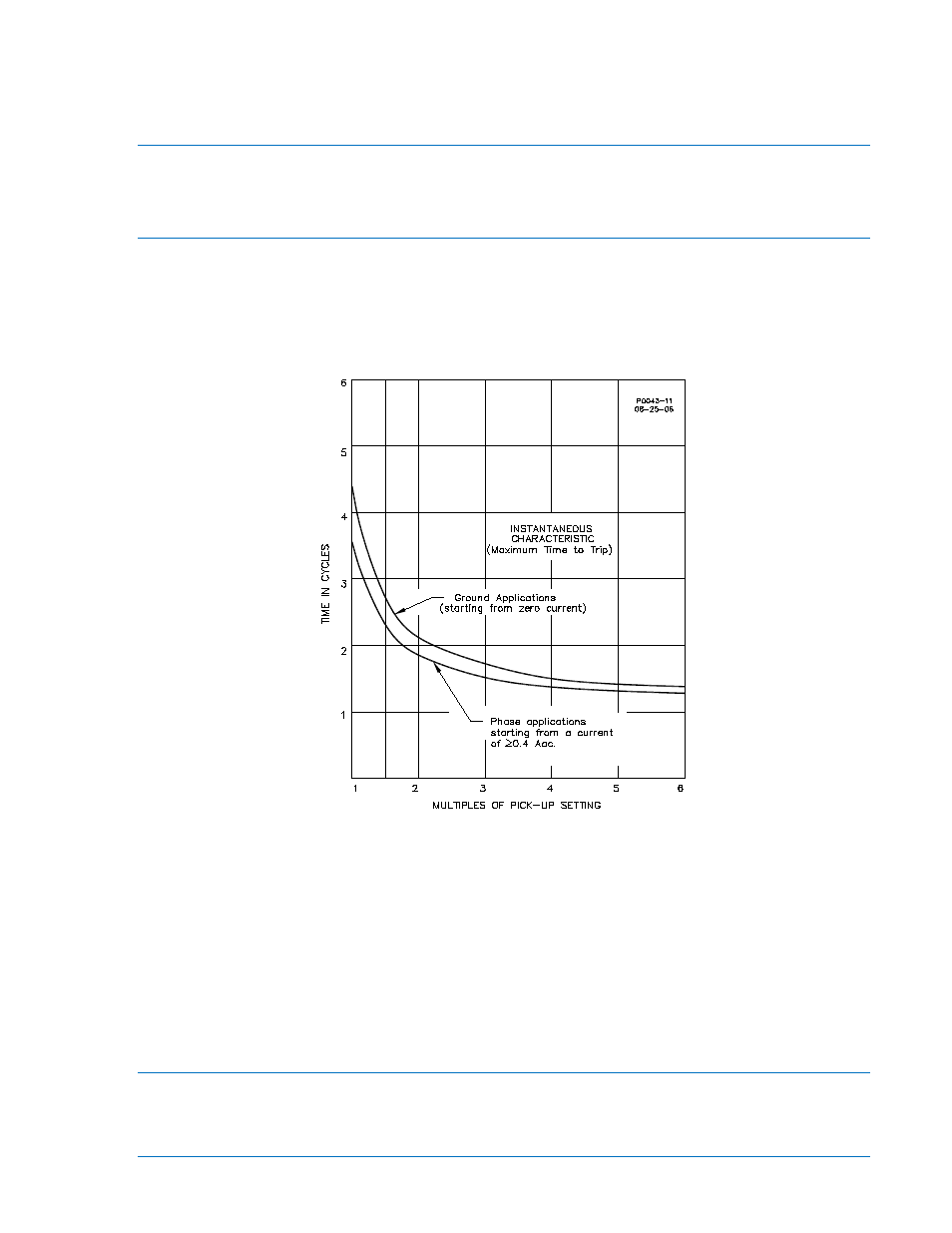Introduction, Instantaneous overcurrent characteristics, Timing – Basler Electric BE1-50/51B-244 User Manual
Page 45: Pickup, Time overcurrent characteristics, Figure a-1. instantaneous characteristic curves, Appendix a • characteristic curves

9252000793 Rev C
BE1-50/51B-244 Characteristic Curves
A-1
APPENDIX A • CHARACTERISTIC CURVES
Introduction
This appendix describes and defines the instantaneous overcurrent, time overcurrent, and integrating
time reset characteristics of the BE1-50/51B-244 relay.
Instantaneous Overcurrent Characteristics
Timing
The instantaneous characteristic curves of the BE1-50/51B-244 relay are similar to standard
electromechanical instantaneous units. However, the time to trip for applications where the initial sensing
current is less than 400 mA may be slightly longer. This may occur on a very lightly loaded circuit or when
the relay is providing ground protection and is connected to measure neutral current. Figure A-1 shows
the instantaneous characteristic curves for the maximum time to trip.
Figure A-1. Instantaneous Characteristic Curves
The delay of the Instantaneous A (50-A) element can be set for no intentional delay (switch SW3-2 open)
or a fixed delay of 100 ms (SW3-2 closed). Figure 2-2 illustrates the location of SW3. The time delay of
the 50-B element is not switch-selectable and is fixed at no intentional delay.
Pickup
The instantaneous elements of the BE1-50/51B-244 relay may be set lower than the instantaneous
element in IAC relays and still have the same reach. This is because the BE1-50/51B-244 instantaneous
elements effectively eliminate the fault current transient overreach components. When setting the BE1-
50/51B-244 instantaneous elements, calculate the symmetrical value without any adder for transient
overreach.
Time Overcurrent Characteristics
Nine inverse time functions and one fixed (definite) time function can be selected at the front panel. Curve
types are identified by a letter designator. Available curve types are short inverse (S), long inverse (L),
definite time (D), moderately inverse (M), inverse (I), very inverse (V), extremely inverse (E), BS142
inverse, (B), and BS142 extremely inverse (C).
